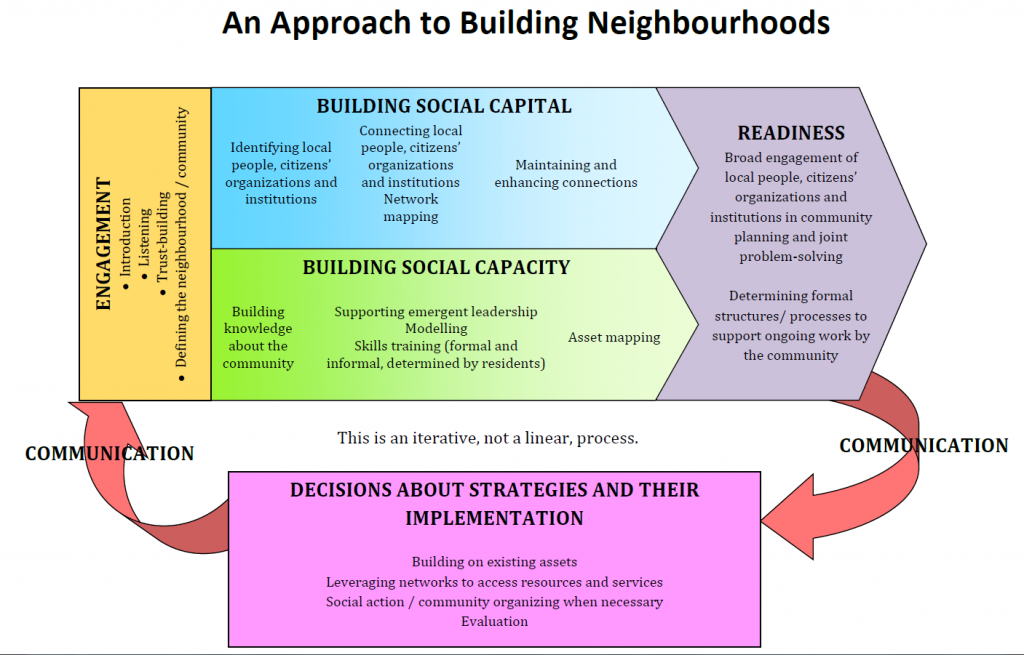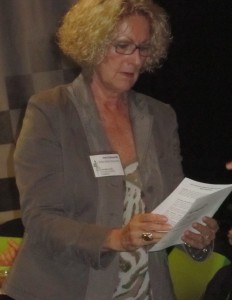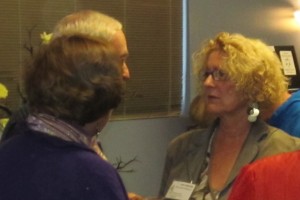January 28, 2014
BURLINGTON, ON
It started as a pilot project in North Burlington during 20131 that proved to be a remarkable success. At that time the city gave Community Development Halton (CDH) $86,000 to strengthen community at the neighbourhood level by actively engaging community members and agencies and to continue increasing access to recreation and culture within neighbourhood spaces.
The measurables are remarkable. CDH took the money and leveraged it to bring in $40,000 in kind and recorded 3130 in volunteer hours. Few organization can talk in terms of that number of volunteer time.
The pilot did more than that – it brought out a response from the faith communities who have opened their doors and their arms and hosted events. One of the early offerings was community dinners which irked some because they felt city money was being used to feed people dinner – that’s not where the dollars went.
How does a social planner explain what they do? Listen to Rishia
The dollars went to fund a community social planner who managed to convince a sports team from Hayden High in Alton to prepare and serve one of those dinners. The socioeconomic differences between these two groups – North Burlington residents and Hayden high students creates an understanding, a tolerance and an appreciation of each other.
Joey Edwardh, CDH Executive Director, explains that neighbourhood development is not a social service. Vibrant neighborhoods is a formative pillar in the city’s Strategic Plan. The social planner that was hired is on the ground working with people in the community to “connect the dots”. A city is more than bike paths and roads that are in good repair – the city is its people says Edwardh with some gusto.
The pilot project now has many of its dis-advantaged people serving lunches to seniors in faith community settings.
Neighbourhoods are the first point of contact for members of council – and this city has neighbourhoods that are not visible – much the way it took city council some time to become aware of the vibrant art and culture groups in the city – few knew they were even there.
One of the harder realizations for people who work in disadvantaged communities is spotting the lack of aspirations on the part of these young people. Their parents cannot afford to put their children into hockey programs, they can’t pay for tickets to Performing Arts events – lunch money is a stretch most of the time. Joining the Burlington Teen Tour Band is totally out of the question.
Each of these would be said to be what defines Burlington and that wouldn’t be a false statement – but for many, far more than most of us realize, being part of these defining groups is a hard reality for the disadvantage.
Is community development a city responsibility? If the city is to be “vibrant” development has to be done at the community level and that is easier to do in some communities that it is in others.
Some feel this kind of service gets done by the Regional government. The Region delivers and over sees services mandated by the province and includes services that are more effectively and economically delivered by the Region.
Community Development Halton has a rich history in the field of community development. It grew out of social councils that were operational back when Roly Bird and Walter Mulkewich were Mayors and current provincial Minister of Community Services Ted McMeekin was employed as the Executive Director of the original social council in Burlington.
Some ground breaking reports came out of CDH and some now very successful community organizations were incubated at went on to become a part of the fabric that keeps the city together. Food for Thought – a program that ensures students who are not being fed properly get the meals and the nutrition they need. Today we wouldn’t think of not having Food for Thought.

What do you get for $86,000 – what do you think of this for a process. Can you see your city in there?

Shuffling the papers as she prepares to speak Community Development HAlton Executive Director Joey Edwardh delivers the message
With the funding Edwardh is seeking for 2014 community development at the neighbourhood level could begin in South East and Central Burlington.
The business case submitted to council’s budget review process fits well with the city’s Leisure Services Policy and Community Development Policy. It is similar to the approach taken regarding Community Gardens. This business case is based on a 1% increase over the city’s investment in the pilot project in 2013. Mid year and end of year reporting to the City of Burlington will be expected.
There is some additional work to be done at the city/Regional level clarifying a “place based” neighbourhood strategy that meets the needs of the City of Burlington and the Region of Halton, considering each level of government’s service responsibilities. The City will have completed service business plans and will be ready for service based budgets in the 2015 budget.
Community is eclectic, chaotic and doesn’t grow with constraints. Community is people – they come in all sizes shapes and colours.
The argument for funding this program will be delegated on February 4th – the decision will say a lot about the kind of city we really are.




















